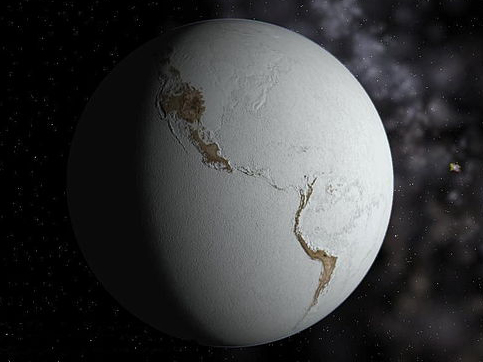
Sudden Rise In Oxygen Level Led To Animal Evolution, Study Reveals
The ‘explosion’ of animal life including humans of today on Earth may have taken place after the rise in oxygen level, says a recent study. However, the oxygen didn’t rise instantly and it took nearly 100 million years for oxygen to reach a certain level so that it can support evolutionary process.
It took 100 million years for oxygen levels in the oceans and atmosphere to increase to the level that allowed the explosion of animal life on Earth about 600 million years ago, according to a UCL-led study.

Previously, some scientists believed that newly-evolved life forms oxygenated the planet. It was not known how quickly Earth’s oceans and the atmosphere became oxygenated and if animal life expanded before or after oxygen levels rose.
The new study, published recently in Nature Communications, shows the increase began significantly earlier than previously thought and occurred in fits and starts spread over a vast period. It is , therefore, ikely that early animal evolution was kick-started by increased amounts of oxygen, rather than a change in animal behavior leading to oxygenation.
“We wanted to find out how the evolution of life links to the evolution of our climate. The question on how strongly life has actively modified Earth’s climate, and why the Earth has been habitable for so long is extremely important for understanding both the climate system, and why life is on Earth in the first place,” said lead researcher Philip Pogge von Strandmann from the University College London (UCL).
Researchers have tracked what was happening with oxygen levels globally 770 – 520 million years ago (Ma) using technique and examined the amount of selenium isotopes present in the rocks across the US, Canada and China.
What researchers found was mind boggling. It was found that oxygen level rose significantly over a time span of 100 million years that led to the evolution of animals. The amount of oxygen in the atmosphere rose from less than 1% to over 10% of today’s current level. This was arguably the most significant oxygenation event in Earth history because it ushered in an age of animal life that continues to this day.
“We were surprised to see how long it took Earth to produce oxygen and our findings dispel theories that it was a quick process caused by a change in animal behaviour,” said Strandmann.
Until now, oxygenation was thought to have occurred after the relatively small Gaskiers glaciation melted. However, the authors say their findings push it to an earlier period, to the Marinoan glaciation, after which animal life began to flourish in the improved conditions, leading to the first big expansion of animal life.
“Tracking how oxygen increased is the first step toward understanding why it took so long. Ultimately, a grasp of geologic controls on oxygen levels can help us understand whether animal-like life might exist or not on Earth-like planets elsewhere,” said Catling, who also holds an appointment with the UW Astrobiology Program.